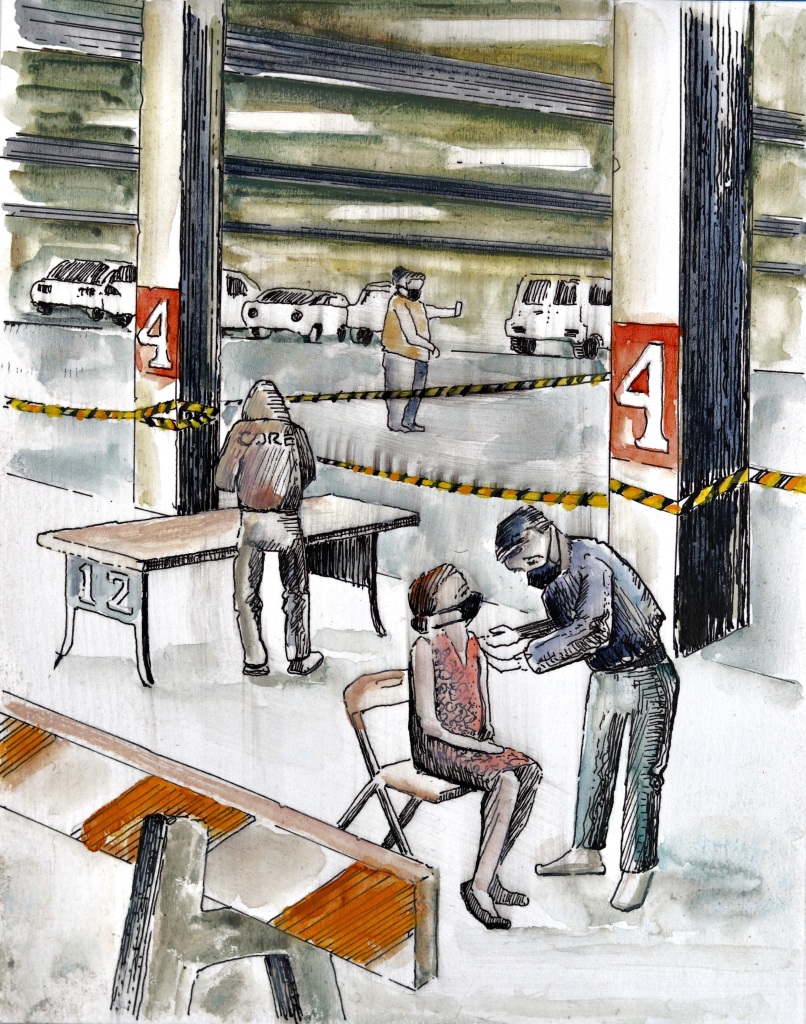NOW, you make an appointment with your doctor. Or you go to a pharmacy. A clerk takes your information, invites you to have a seat in a molded plastic chair in the waiting area. You people-watch for a while, or scroll through your phone, or study the list of ingredients on the candy bar you promise not to buy yourself. You bathe in the odd, but familiar glow of fluorescent light. Soon, someone from behind the glassed-in work area comes out and directs you into a cubicle. There, discreetly, privately, he or she performs the deed: you get your Covid vaccine.
But THEN, it wasn’t like that. THEN, you had to scour the newspaper or search the web to know when you would be eligible to get the shot. Eligible to register for it. You also had to figure out where to get it. Some people could get the shot first, others had to wait. The elderly, the vulnerable – they went first. Essential workers, they went first. Educators (like me), they went first. Everybody else had to wait.
When my turn came – and PS: don’t miss your slot on the schedule, supplies are limited – I didn’t go to a doctor or a pharmacy, I was sent to a mass-vaccination site on the campus of the University of Southern California. An entire seven-story parking structure had been turned into a huge distribution center.

A long line of cars slowly snaked through the garage and up to the roof. From there, we walked back down to lower levels where parking stalls had been converted into a field clinic. That everything ran smoothly seemed miraculous – I felt like whoever was in charge deserved a medal. From a hygenic perspective it couldn’t have been ideal: traffic cones, caution tape, blue lunch coolers holding the vaccine, all in a cold, cavernous structure with cars everywhere and health workers in hoodies and scarves. But no one I spoke to even thought of complaining. The solidarity was palpable. We were all in this together.

That was all of two and a half years ago. To hear people describe those early days of the pandemic, even to remember it for yourself, sounds like something from a different epoch. Not just something from your own past, but something from the history of humankind, like the scenes they reconstruct in a movie or a theatre where everyone is wearing clothes that are now considered “vintage,” people drive old-fashioned cars, huddle around radios the size of furniture, and colors are all well-coordinated, because they’re all a little more monochromatic. But it wasn’t a different time. It was two and a half years ago. It was the same time as now. We dress the same way now as then, talk the same way, drive the same cars, use cell phones and computers now just like then.
Everyone agrees that the days slowed down during that time. I think it was more. Time was warped by the pandemic. It doubled back on itself. We were living in the kind of world our parents told stories about, from when they were young. Maybe our grandparents, even. Stories in which scarcity – even in the most developed country in the world – was a fact of life, science couldn’t answer all your questions, and the steady flow of daily events wasn’t taken for granted.
Some historians will say that progress is an illusion. Usually this means not to underestimate our ancestors – they were just as sophisticated as we are. But it may also mean not to overestimate our present – it is just a primitive as the past ever was.